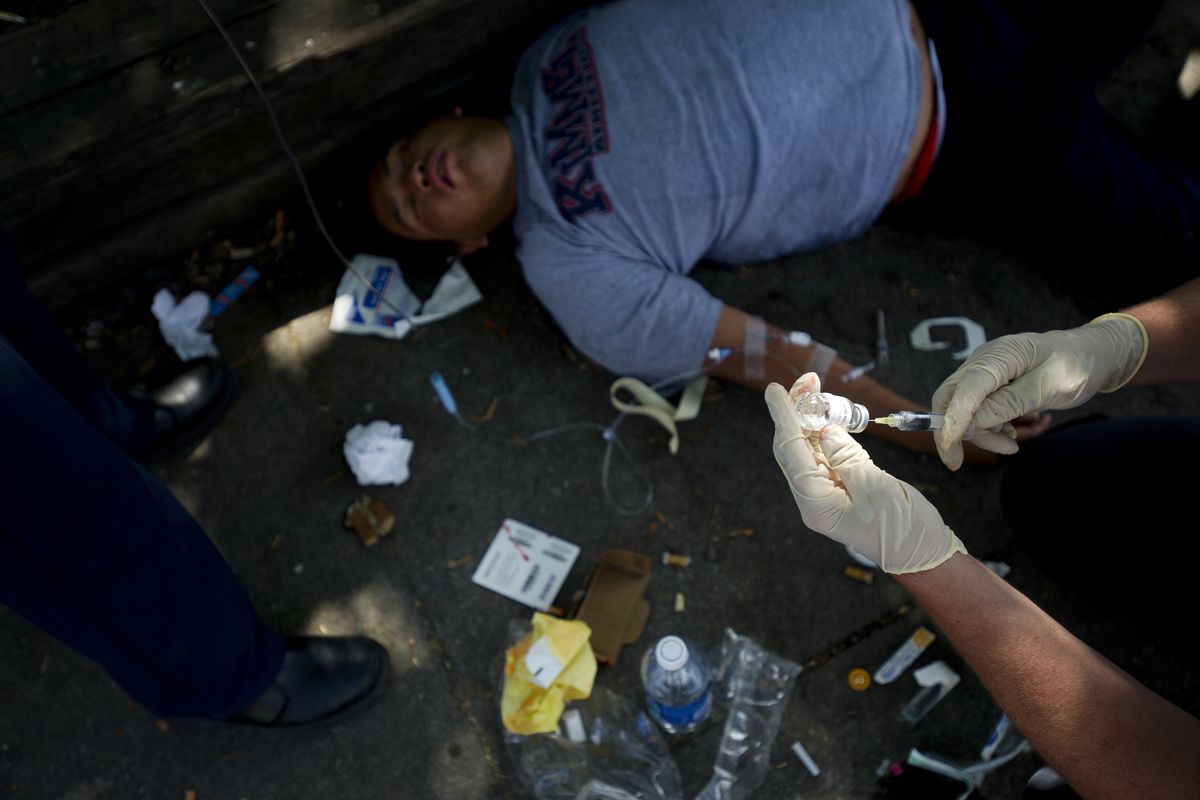Official: Downtown booze crackdown just shifted problem

With a bicycle at his disposal, Marcus Hayes will travel to stores in Hillyard, Spokane Valley, or just north of downtown to fill the orders of the residents on “the wall” at Sprague and Browne.
Hayes, 35, who lives on the streets, relies on access to low-cost, high-octane beers, shared by a small group of transients who congregate at the corner near the bus and train depot. But since the state Liquor Control Board agreed last April to the city of Spokane’s request to establish a mandatory alcohol impact area downtown, Hayes has become a willing peddler, feeding his habit by going to stores in outlying areas.
“You hustle all day to pay $2 for a beer and you don’t want the beer to be no good,” Hayes said. “So I get everybody’s order, I ride around, I come back and deliver.”
So far the evidence has been anecdotal to support the idea that the problems associated with public drunkenness are spilling from the downtown core into other areas. As the city attempts to pass a similar ban in the East Central neighborhood that limits the sale of high-octane booze, those problems will increase elsewhere, officials said.
“It’s all tied together,” said Spokane Fire Department Assistant Chief Brian Schaeffer, who said medical calls for alcohol-related incidents are on the rise in other neighborhoods, like Hillyard. In northeast Spokane, emergency crews have had to ask for community detoxification services for more patients than ever before, Schaeffer said.
“That never used to be the case,” Schaeffer said. “It’s getting pretty far north,” and is likely to get worse as chronic inebriants are forced out of the downtown core to obtain fortified beer and wine, which typically has a higher alcohol content, in single servings.
Last year the city passed a mandatory ban on stores selling high-octane beer and wine in single cans and six-packs for off-premise consumption for the downtown area, hoping to push out problems associated with chronic drunks. Those problems moved east, with calls regarding intoxication increasing 80 percent in East Central since the downtown ban was put in place.
While calls for service have decreased downtown – Spokane police estimate alcohol-related calls downtown went down 47 percent after the ban – the problems are still apparent, especially for those who live it every day.
And in turn, the same publicly intoxicated individuals are tying up emergency service vehicles, sometimes several times a day.
On Friday, firefighters responded to a report of an unconscious man at “the wall” – a flower bed that borders the train and bus depot on West Sprague Avenue and South Browne Street – within the impact zone. The man, who did not have any identification and was comatose, needed transport by ambulance to a local hospital.
Schaeffer was driving by and saw the man lying on the sidewalk, and said he would likely not have lived if he had gone unnoticed. He had been lying unconscious in his own urine for more than four hours, witnesses said.
Farther east, Marty Christman had been released from the hospital just hours before he was spotted lying face up on some grass along a stretch of East Sprague Avenue, across from Sonnenberg’s Market & Deli.
“People are gonna drink what and where they want,” said Amy Lambert, Christman’s friend, who said those who want cheap alcohol will go wherever they can to get it. She pushed several cans of high-octane Steel Reserve, which contains more than 8 percent alcohol, away from Christman and made him drink some cold water. “If it ain’t here it’s gonna be someplace else.”